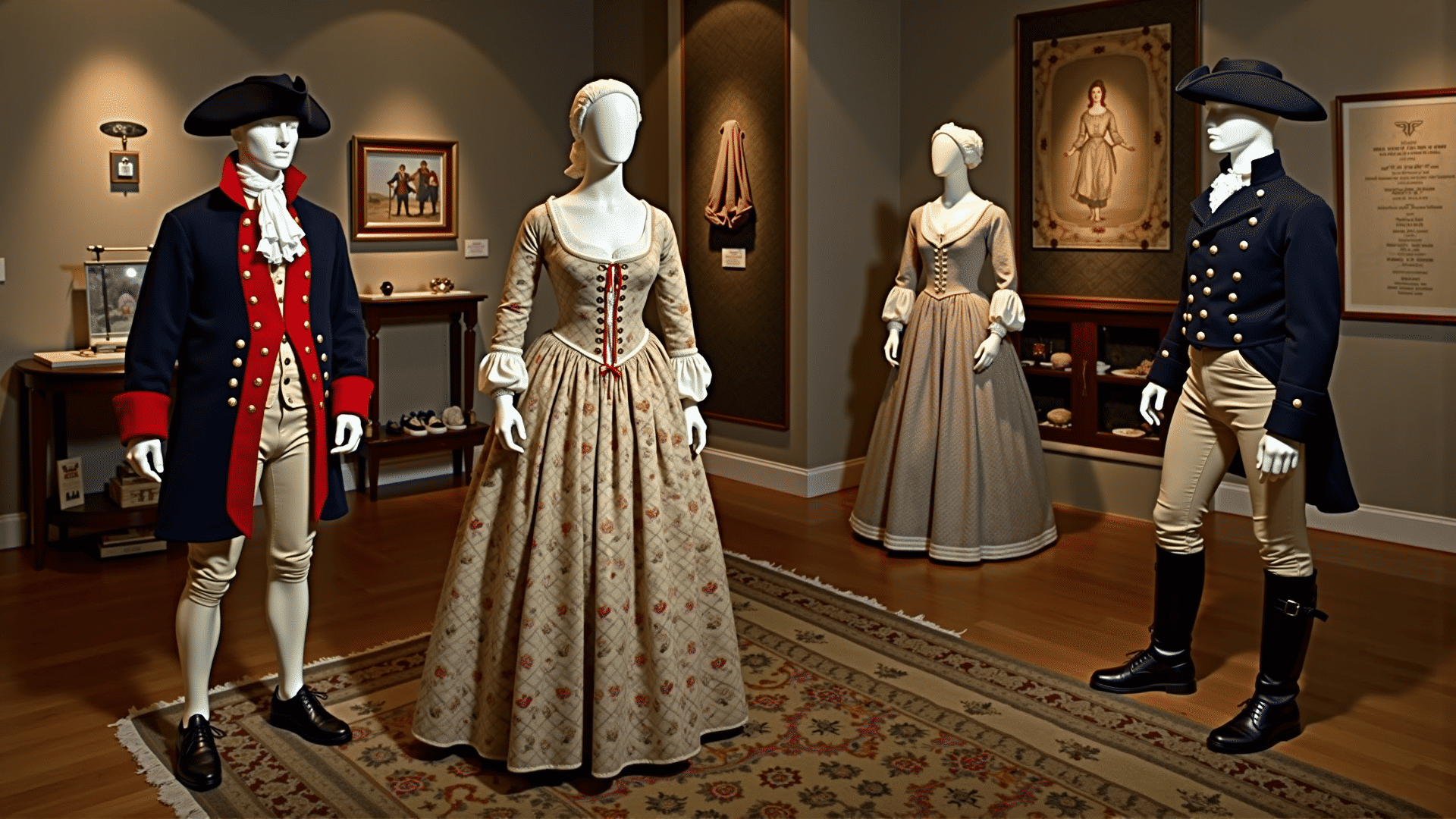The period of the American Revolution was not only a time of political upheaval but also a significant transformational phase for the way people dressed. This era marked a shift away from overt British influences toward the beginnings of a uniquely American approach to dress.
In the early stages of the Revolution, the influence of British style was predominant, with American colonists often mirroring the refined attire of English society. The style of dress was distinguished by fine fabrics and intricate designs. Men often donned waistcoats, fitted breeches, and frock coats, while women wore floor-length gowns with structured bodices and elaborate trims. Accessories such as wigs for men and extravagant hats for women were also in vogue, reflecting European tastes and values.
As revolution fervor grew, so did a sense of identity independent from British norms. This period brought about subtle changes in the way colonists dressed. Practicality became more emphasized, especially during the war when resources were scarce. People began embracing homespun clothing produced within the colonies, a move that was both a patriotic statement and a necessity due to the limited availability of imported textiles. Men started wearing less ornate clothing, opting instead for simpler cuts and durable fabrics suitable for daily work and the rigors of military life.
Women's apparel also reflected this change. Gowns became less ostentatious, with simpler lines replacing intricate designs. The emphasis on practicality meant that women often wore shortgowns and petticoats made of locally produced cotton or linen rather than silk or wool imported from overseas.
This shift was partially driven by the Charleston Association and other organizations that called for a boycott of British goods. In response, local weaving industries began to grow, and an appreciation for self-crafted attire burgeoned. Separately, the rise of American military uniforms, such as those worn by the Continental Army, showcased a move toward more purpose-specific garments, defined by their own colors, cuts, and symbols.
This period also played a foundational role in the nascent American identity. The changes in dress became a subtle but significant expression of newfound independence and unity among the colonists. By the end of the Revolution, what people wore began to symbolize their break from European domination and the establishment of a distinctively American identity.
Thus, the Revolution was transformative not only politically but also sartorially, as a new nation took the moment to redefine its identity, drawing from practicality, resourcefulness, and a growing sense of community spirit.
